Experience Japan in Bloom: Your Ultimate Guide to Spring Travel and Festivals
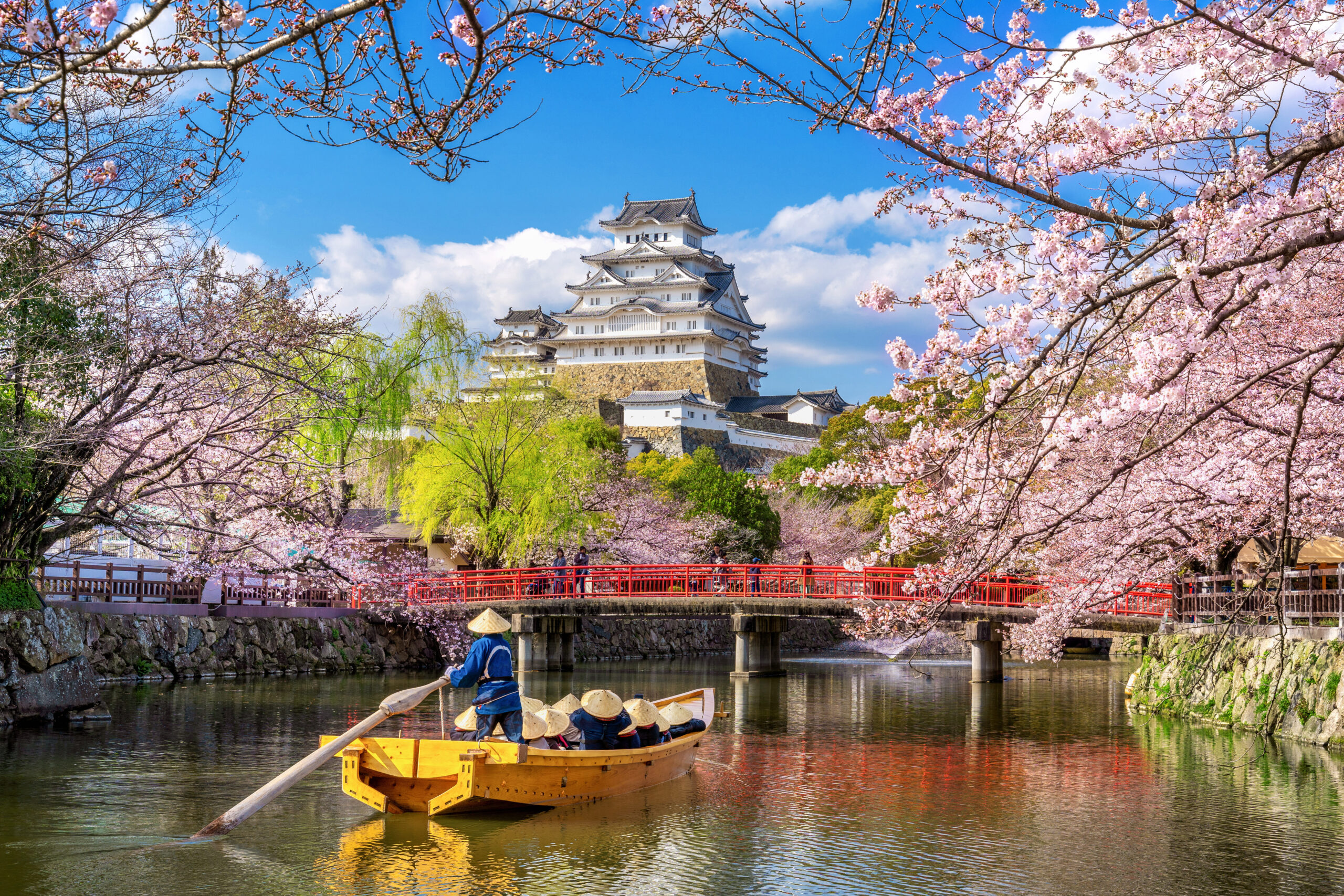
“Spring has arrived in Japan, and while cherry blossoms are the talk of the town, there’s so much more to discover! Are you wondering where to find hidden gems beyond the typical tourist spots? Which festivals are truly worth experiencing?”
Japan’s spring offers a wealth of experiences beyond the famous sakura. From off-the-beaten-path destinations to vibrant cultural festivals, there’s something for every traveler seeking an authentic and enriching journey.
In this article, we’ll unveil Japan’s best-kept spring secrets and immerse you in the heart of traditional festivals. From the serene Japanese Alps, create memories that will last a lifetime. Get ready to experience Japan’s spring like never before, with insider knowledge to guide your journey. We’ll explore hidden gems, must-visit spring festivals, how to navigate the busy Golden Week period, and information about onsen (hot springs).
Unveiling the Magic of Spring in Japan: More Than Just Cherry Blossoms
A Season of Renewal and Beauty
Spring in Japan breathes new life into both the countryside and the city, transforming everyday scenes into something truly special. As winter fades away, gardens fill with vibrant blooms and parks dress in lush greenery. The famous cherry blossoms might steal the spotlight, but every part of nature has its charm. Temples, streets, and even everyday corners get a gentle makeover, creating the perfect setting to begin fresh and new adventures.
Locals and visitors alike step out with a sense of renewed energy, ready to embrace outdoor walks, casual picnics, and simple moments of delight. It is a season that celebrates life, where natural beauty and cultural traditions come together harmoniously.
Whether you are a longtime resident or a newcomer, Japan in spring offers an inspiring backdrop that reminds everyone that new beginnings are always just around the corner.
Why Spring Is the Best Time to Visit Japan
There’s a reason so many people rush to Japan in spring—it simply is the best time to explore the country. The weather is mild and inviting, making it perfect for long walks in parks or leisurely boat rides along a river. With temperatures just right for outdoor dining and exploring, visitors can enjoy both city life and nature without the harsh extremes of summer heat or winter cold.
Beyond the pleasant weather, spring brings a series of lively festivals and community celebrations. Whether you’re watching a parade or simply enjoying a quiet moment under a canopy of blossoms, the atmosphere is cheerful and welcoming. Travelers often find that every neighborhood and rural area seems to pulse with life during this season.
The unique blend of cultural events and natural wonders creates memories that last long after you’ve returned home.
Setting Realistic Expectations: The Reality of Spring Travel
While spring in Japan is undeniably beautiful, it’s important to approach your trip with realistic expectations. Some popular spots can become very crowded during peak bloom, and it might take a little extra planning to fully enjoy each experience.
Think of the bustling parks or famous viewing areas; these are popular for a reason, but they can also mean waiting in lines or navigating through throngs of people. Knowing this, many travelers choose to visit early in the morning or explore lesser-known neighborhoods to avoid the rush. It often helps to balance your itinerary with both well-known attractions and quieter, off-the-beaten-path experiences.
By planning ahead and keeping a flexible mindset, you can still enjoy all that Japan’s spring offers without the frustration of overcrowded sites. This way, you manage your expectations and make the most of your visit.
Best Time to Visit Japan Spring: Avoiding the Crowds
Timing your visit just right can turn a hectic spring trip into a peaceful retreat. The key is to aim for the start or the end of the cherry blossom season when the trees begin to bloom or are just past their peak. In these windows, you’ll notice fewer visitors and more space to breathe as you take in the beauty around you.
Additionally, planning your excursions on weekdays rather than weekends can make a big difference; local parks and tourist spots are often much quieter during these times.
Many seasoned travelers also recommend venturing slightly off the main tourist paths. These areas offer similar natural beauty and cultural charm without the hustle and bustle you might find in more popular locations. By making smart choices about when and where to go, you can enjoy a more intimate, relaxed experience of Japan in spring that leaves you feeling refreshed and connected to the season.
Planning Your Perfect Spring Trip: When to Go & What to Expect
Understanding Japan’s Spring Calendar: Key Dates and Holidays

When planning your spring journey, knowing the key dates on Japan’s calendar is essential. Spring is marked by the blooming of cherry blossoms and other seasonal flowers, and many regions celebrate with local festivals.
The beginning of April is especially busy as sakura season takes hold, while end-March and early-May bring additional local events. Public holidays like Showa Day (昭和の日, Shōwa no Hi) on April 29 and Constitution Memorial Day (憲法記念日, Kenpō Kinenbi) on May 3, which are part of Golden Week (ゴールデンウィーク), provide extra opportunities to experience community celebrations.
Many locals take this time to relax and participate in outdoor activities, so it is wise to book accommodations and travel well in advance. Being aware of these dates, including Golden Week, can help you avoid the busiest periods and plan visits accordingly.
This calendar is your essential guide to spring in Japan. It highlights the best times to see specific regions in full bloom and experience authentic cultural events. More than just dates, it’s a practical tool to help you plan your trip, ensuring you catch the most enchanting moments while avoiding the crowds and fully immersing yourself in Japan’s springtime beauty and traditions.
Golden Week Travel: Planning Ahead and Alternatives
Golden Week is a popular period for travel in Japan, with a series of consecutive holidays that often lead to crowded transportation and busy tourist attractions. If you plan to travel during Golden Week, it is crucial to book your tickets and accommodations early.
Many locals and visitors alike take advantage of this break, making major destinations more hectic than usual. For a more relaxed experience, consider alternatives like exploring lesser-known towns or rural areas away from the big cities. Smaller local festivals and community events during Golden Week offer a quieter, yet just as enriching, experience of Japan’s culture.
By planning ahead and weighing your options, you can avoid the stress of crowded spots while still catching the festive spirit that defines this period. Taking alternative routes and being flexible with your dates can help you enjoy a more peaceful travel experience.
For understanding Japan’s public holidays, you can refer to the following resources:
- Japan National Holidays: This site offers a comprehensive list of national holidays in Japan, including detailed descriptions and dates.
Budgeting for Spring Travel: Tips for Saving Money
Traveling in Japan during spring can be a delight, but it can also stretch your budget if you’re not prepared. Start by setting a realistic budget before you begin planning. Booking your accommodation early is key, especially in high-demand areas during the peak flower season. Look for deals on hostels, guesthouses, or budget-friendly 旅館 (ryokan).
In addition, consider purchasing transportation passes, such as the Japan Rail Pass, which can save you money if you plan to visit multiple regions. Eating local cuisine at small restaurants and street vendors is not only authentic but also cost-effective. Planning your itinerary to group nearby attractions together can reduce travel costs, keeping expenses under control. By prioritizing activities and choosing less crowded or alternative destinations, you can enjoy Japan’s spring splendor while staying within your budget.
An organized budget plan will allow you to savor both the cultural experience and the natural beauty without financial strain.
For comprehensive and official information on budgeting and saving money during your spring travel in Japan, consider these valuable resources:
- Japan National Tourism Organization (JNTO): The official JNTO website offers extensive guides on transportation, accommodation, and budget travel tips. It’s an excellent starting point for planning your trip.
- Japan Rail Pass: If you’re considering using the Japan Rail Pass, which can significantly reduce transportation costs, visit the official Japan Rail Pass website. Here you’ll find details on pass types, pricing, and purchasing information.
These official sources provide reliable, up-to-date information to help you plan a budget-friendly spring trip to Japan.
What to Pack: Essential Items for Spring in Japan
Packing for a spring trip to Japan means preparing for varied weather and outdoor adventures. Bring layers of clothing that can be added or removed, as mornings and evenings may be cool while afternoons are pleasantly warm. A lightweight waterproof jacket is recommended because spring showers are common.
Don’t forget to pack comfortable walking shoes, as you may spend a lot of time exploring parks, temples, and local streets. If you plan to visit rural or high-altitude areas, consider packing a hat and sunscreen for extra protection.
Travel essentials like a portable umbrella, a refillable water bottle, and a small daypack can make your day trips more convenient. In addition, include travel adapters for any electronic devices and a basic first-aid kit.
Having these items ready ensures that you can enjoy every moment of your spring adventure, whether you are participating in a local festival or hiking through serene landscapes.
Planning ahead? See our tips for SIM cards & payment cards.

Must-See Spring Destinations: Unforgettable Scenery and Natural Beauty
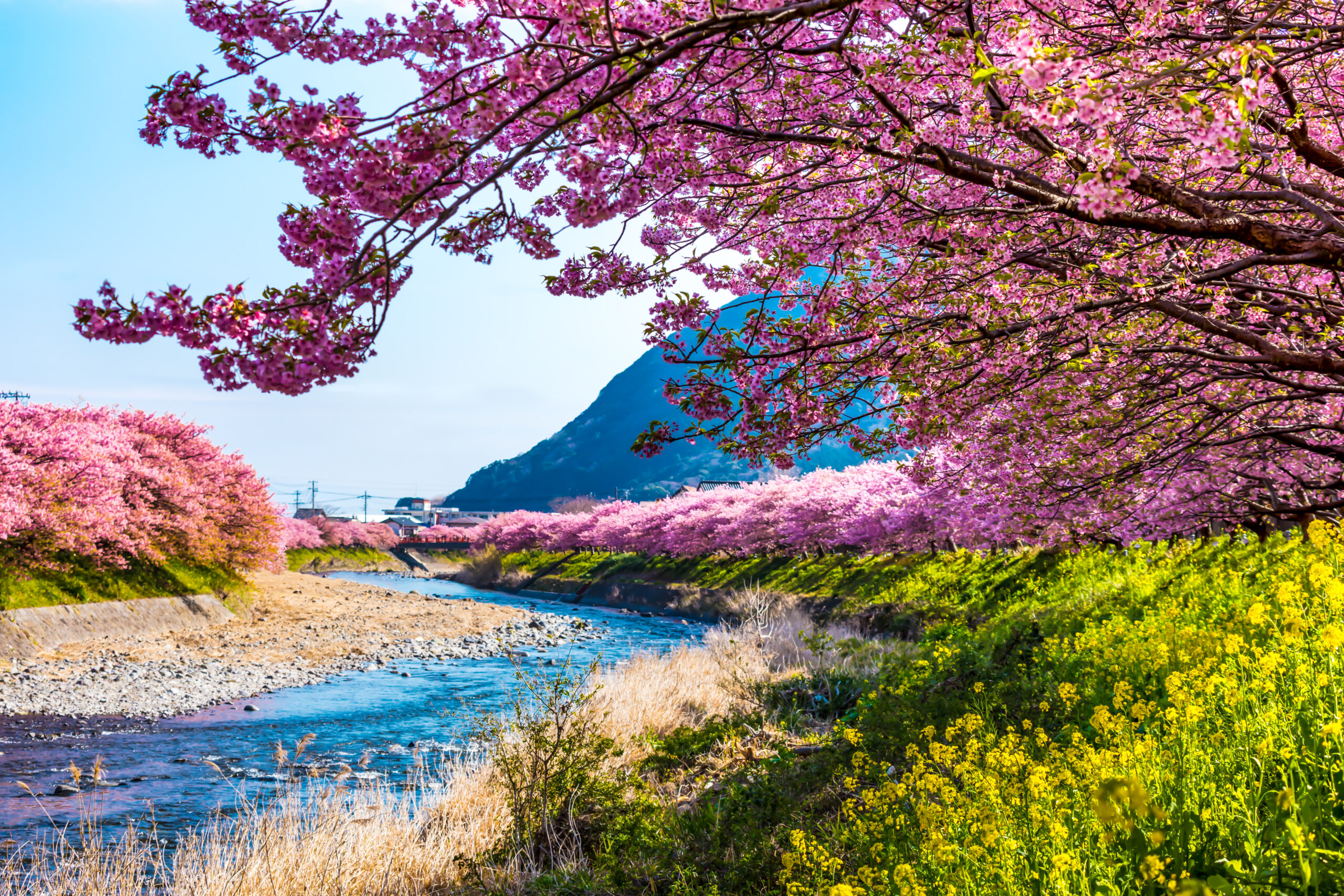
Iconic Cherry Blossom Viewing Spots
Japan is renowned worldwide for its cherry blossoms (桜, sakura), with certain locations standing out as iconic viewing spots during spring.
Mount Yoshino (吉野山, Yoshinoyama) in Nara Prefecture (奈良県, Nara-ken) is one such place, where nature takes center stage. This mountain area is famous for its approximately 30,000 cherry trees of about 200 varieties, primarily mountain cherry trees (山桜, Yamazakura).
During peak bloom, typically in early to mid-April, the entire mountainside is covered with a stunning display of light pink blossoms. The area is uniquely divided into four viewing sections: Shimo-senbon (下千本), Naka-senbon (中千本), Kami-senbon (上千本), and Oku-senbon (奥千本). This tiered layout allows visitors to enjoy the blossoms over an extended period, as different sections of the mountain reach full bloom at slightly different times.
Hirosaki Castle (弘前城, Hirosaki-jō) in Aomori Prefecture (青森県, Aomori-ken) is renowned for its historical significance and natural beauty. The castle grounds host one of Japan’s most celebrated cherry blossom festivals, the Hirosaki Cherry Blossom Festival (弘前さくらまつり, Hirosaki Sakura Matsuri), typically held from late April to early May. Visitors can enjoy approximately 2,600 cherry trees of 52 varieties, including the iconic Somei Yoshino (ソメイヨシノ).
The castle, constructed in 1611, features a three-story keep, fortified moats, castle gates, and corner turrets (櫓, yagura), some of which are original or reconstructed. These structures, designated as National Important Cultural Properties, provide a historical backdrop to the blooming cherry trees.
During the festival, visitors can experience various attractions:
- A 300-meter “Cherry Blossom Tunnel” (桜のトンネル, Sakura no Tonneru) along the western moat.
- Illuminated cherry blossoms and castle structures in the evenings until 10 p.m.
- Boat rentals for rowing on the castle moat, available from 9 a.m. to 5 p.m.
- The unique “flower rafts” (花筏, hanaikada) phenomenon, where fallen cherry petals cover the moat’s surface.
Many visitors come to take leisurely walks around the castle grounds, capturing photos of the blossoms against the backdrop of historic architecture. The park’s layout allows for an extended viewing period as different sections of cherry trees reach full bloom at slightly different times.
In Kawazu (河津町, Kawazu-chō), Shizuoka Prefecture (静岡県, Shizuoka-ken), the early bloom of cherry blossoms presents a unique spectacle. The Kawazu Cherry Blossom Festival (河津桜まつり, Kawazu-zakura Matsuri) is held annually from February 1 to February 28, attracting nearly two million visitors.
What makes Kawazu cherry blossoms unique
Kawazu cherry blossoms (河津桜, Kawazu-zakura) are an early-flowering variety, blooming about a month earlier than most cherry trees in Japan. They are characterized by their large, vivid pink petals and have a longer blooming period, typically lasting for about a month. The first Kawazu cherry tree was discovered in Kawazu in the 1950s and has since been systematically planted across the city.
Things to do around Kawazu during the Kawazu Cherry Blossom Festival (河津桜まつり, Kawazu-zakura Matsuri):
- Walk along the Kawazu River: Enjoy a 4-kilometer stretch lined with approximately 850 Kawazu cherry trees. The river path offers a serene environment to appreciate the early blooming cherry blossoms.
- Evening illuminations: From 18:00 to 21:00, the cherry blossoms are illuminated, offering a magical nighttime viewing experience.
- Festival stalls: Browse various local product stalls and enjoy regional specialties during the festival period.
- Visit 踊り子温泉会館 (Odoriko Onsen Kaikan): This public bath facility offers a chance to relax in hot springs while enjoying views of cherry blossoms from the open-air bath during the blooming season.
- Explore the town: With approximately 8,000 cherry trees throughout Kawazu, visitors can enjoy the blossoms beyond just the main festival area.
For more information about the iconic cherry blossom viewing spots, please refer to the following official websites:
- Mount Yoshino: Yoshino Tourism Association
- Hirosaki Park (Hirosaki Castle Ruins): Tohoku Tourism Promotion Organization
- Hirosaki Cherry Blossom Festival: Aomori Prefecture tourist information
- Kawazu Cherry Blossom Festival: Kawazu Cherry Blossom Festival Executive Committee
- Kawazu Town Tourism: Kawazu Town Tourism Association
- Odoriko Onsen Kaikan: Kawazu Town
These official sources provide up-to-date information on cherry blossom forecasts, festival dates, and local attractions for each location.
Breathtaking Spring Hikes and Nature Escapes:
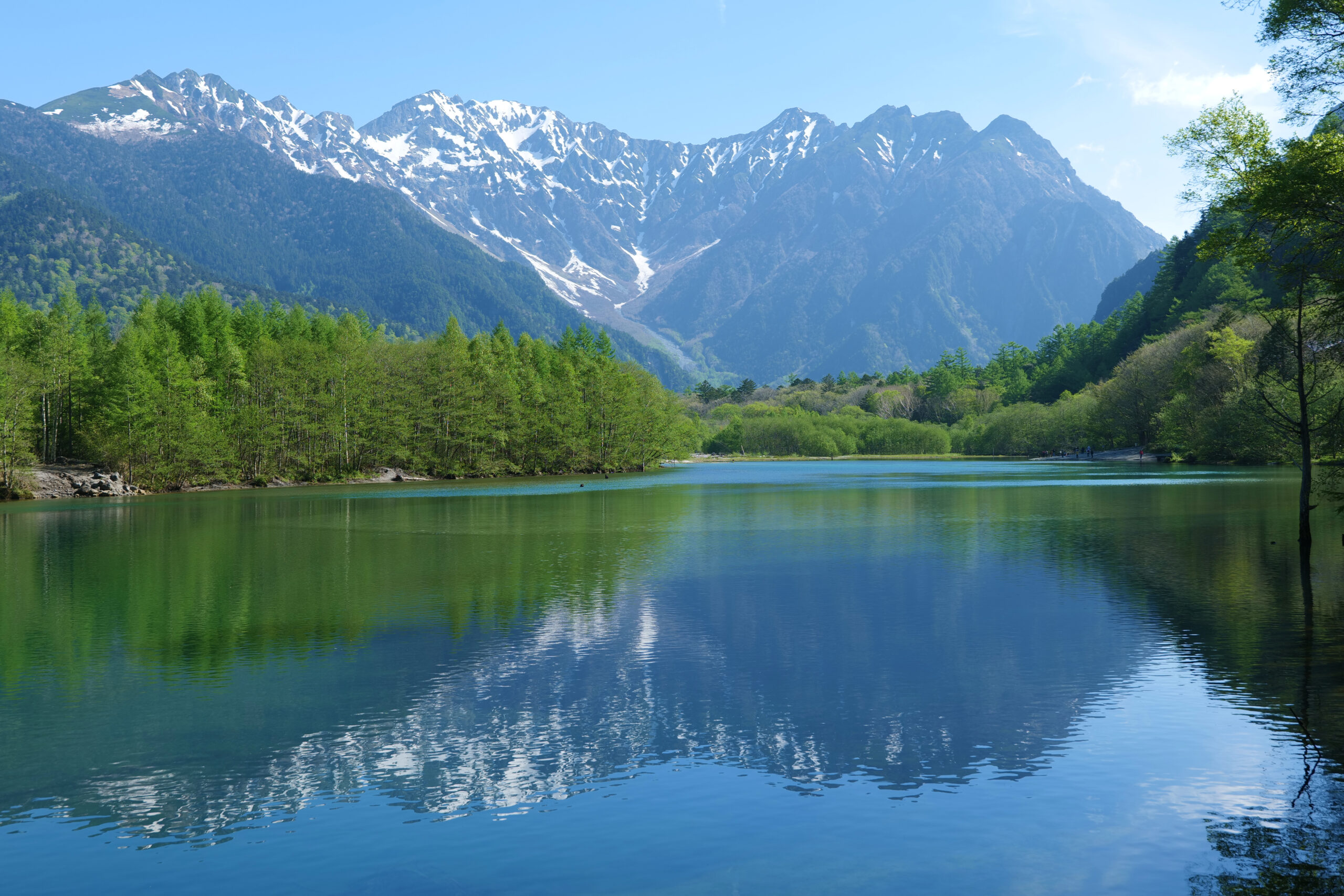
For those who love the outdoors, Japan offers some of the most pristine hiking trails and nature escapes during spring.
In the Kamikochi (上高地, Kamikōchi) region of the Japanese Alps, hikers can experience mountain landscapes with fresh greenery and clear streams. The area is part of the Chubu Sangaku National Park (中部山岳国立公園, Chūbu Sangaku Kokuritsu Kōen) and is open to visitors from April 17 to November 15.
Kamikochi Official Website provides detailed information about hiking trails, including a recommended walking route from Taisho Pond (大正池, Taishō-ike) to Myojin Pond (明神池, Myōjin-ike) via the Kappa Bridge (河童橋, Kappa-bashi). This 9.2 km course takes approximately 3 hours and is suitable for most healthy adults.
The Kamikochi Visitor Center offers a Walking Trail Guide with up-to-date information on trail conditions and wildlife sightings. The trail passes through some of Kamikochi’s most scenic areas, including Tashiro Marsh (田代湿原, Tashiro-shitsugen) and Hotaka/Tashiro Bridge (穂高橋/田代橋, Hotaka-bashi/Tashiro-bashi).
For up-to-date information on trail conditions and guided walks, visitors can check the Kamikochi Visitor Center website. The center provides detailed walking trail guides and the latest information on the paths in Kamikochi.
Another remarkable destination is Mount Koya (高野山, Kōyasan) in Wakayama Prefecture. Known as a site of spiritual pilgrimage, this region features ancient temples set amidst dense forests. The hiking trails here wind through woodlands where visitors can experience a quiet, meditative atmosphere as spring brings new life to the forest. For more information, visit the official Mount Koya tourism website
In Hakone (箱根, Hakone) in Kanagawa Prefecture (神奈川県, Kanagawa-ken), the combination of volcanic landscapes and renewed nature creates a unique hiking experience. Trails in Hakone offer views of hot springs, waterfalls, and spring flora. The region’s geology, paired with spring blooms, showcases Japan’s natural diversity. For detailed information about Hakone’s attractions and hiking trails, visit the official Hakone tourism website.
These hiking destinations, whether through mountainous terrain or forest paths, allow visitors to experience the beauty of Japan’s nature during the spring season. It’s important to note that proper hiking gear, including comfortable walking shoes or trekking shoes, is recommended for these trails.
Relaxing in Japan’s Best Spring Onsen:
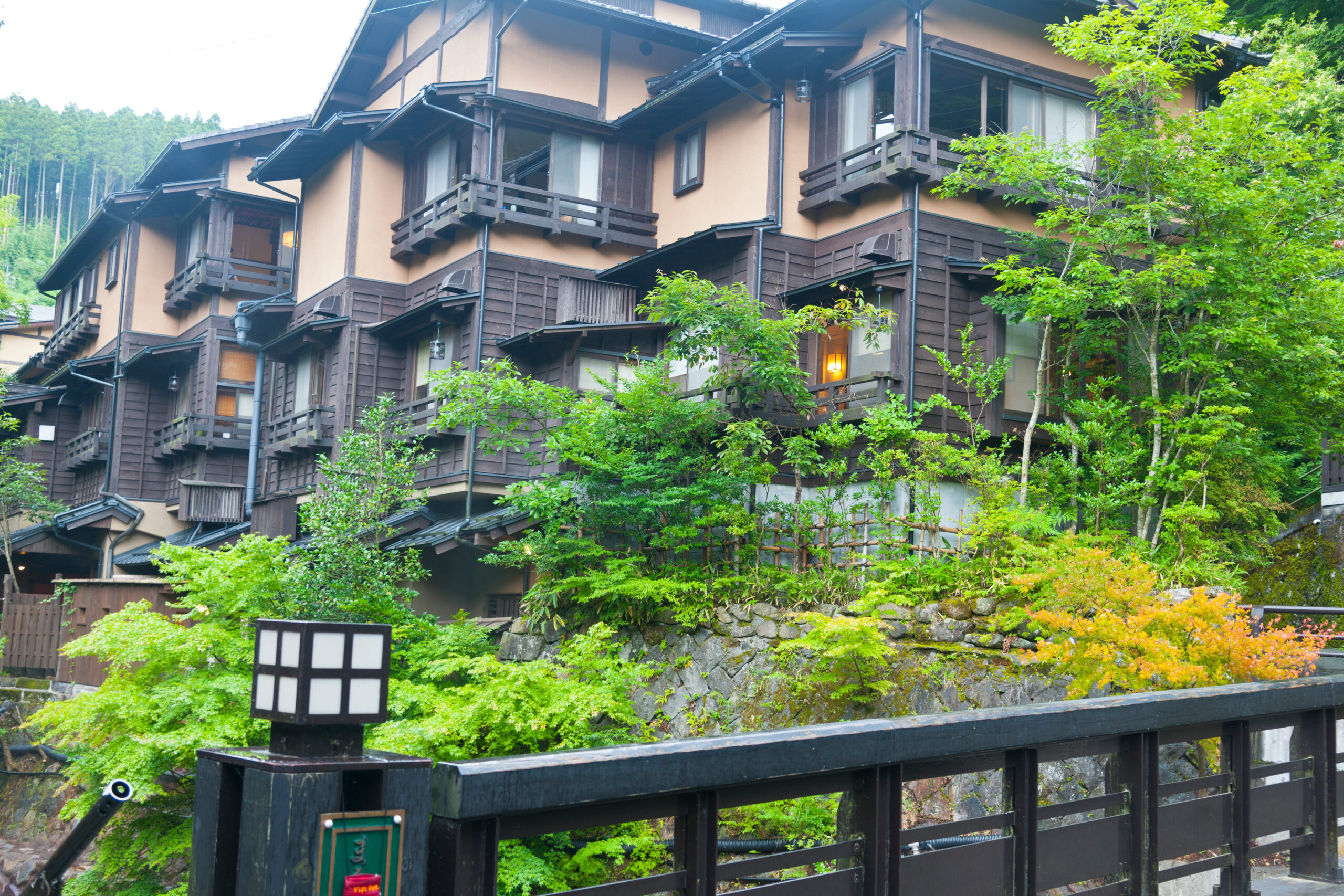
For many, no spring trip to Japan is complete without indulging in one of the nation’s renowned onsen (温泉) experiences.
In Kusatsu Onsen (草津温泉, Kusatsu Onsen) in Gunma Prefecture (群馬県, Gunma-ken), visitors find soothing, therapeutic waters known for their high acidity that is said to alleviate various skin conditions and muscle pain. The town’s lively atmosphere, characterized by traditional bathhouses and charming narrow streets, makes it a year-round destination, but spring adds a special touch when nature’s beauty surrounds the hot spring resorts.
For more information, visit the official Kusatsu Onsen Tourism Association website.
Takaragawa Onsen (宝川温泉, Takaragawa Onsen), also in Gunma, offers a different, yet equally delightful experience. Its picturesque outdoor baths, set along a serene riverbank, allow visitors to soak in warm waters while soaking in the crisp spring air. The view of snow-capped mountains in the distance during early spring creates an unforgettable contrast with the vibrant budding trees along the river.
For more information about this renowned hot spring area, including its world-class outdoor baths and seasonal attractions, visit The Official Site of Minakami.
In Kurokawa Onsen (黒川温泉, Kurokawa Onsen) in Kumamoto Prefecture (熊本県, Kumamoto-ken), the experience is steeped in tradition. Known for its quaint ryokan and historic onsen town ambiance, Kurokawa offers a peaceful retreat where modern stress gives way to an atmosphere of calm and relaxation. Strolling through lantern-lit streets and enjoying a soak in a variety of outdoor baths, visitors can truly unwind. The natural surroundings, coupled with the distinct mineral qualities of the onsen waters, create a rejuvenating experience that perfectly captures the essence of Japanese spring.
To learn more about this traditional hot spring town, visit the Kurokawa Onsen Tourism Association website.
Whether you choose the lively ambiance of Kusatsu, the scenic charm of Takaragawa, or the traditional feel of Kurokawa, Japan’s onsen culture provides an authentic way to refresh your body and soul during the vibrant spring season.
Immersing Yourself in Culture: Experiencing Japan’s Spring Festivals and Traditions
Celebrating the Cherry Blossoms: A Guide to Sakura Festivals
Cherry blossoms are central to Japan’s spring calendar.
The Ueno Park Cherry Blossom Festival (東京, Tōkyō) is held each year at Ueno Park (上野公園, Ueno Kōen) in Tokyo. This festival takes place in early April and is organized by local authorities. Visitors gather to view the blossoms along the park’s pathways and take part in scheduled events such as local music performances and food stalls that operate during the festival period. There is a practical focus on observing the state of the blossoms and enjoying the organized outdoor areas.
Related article you may find interesting:
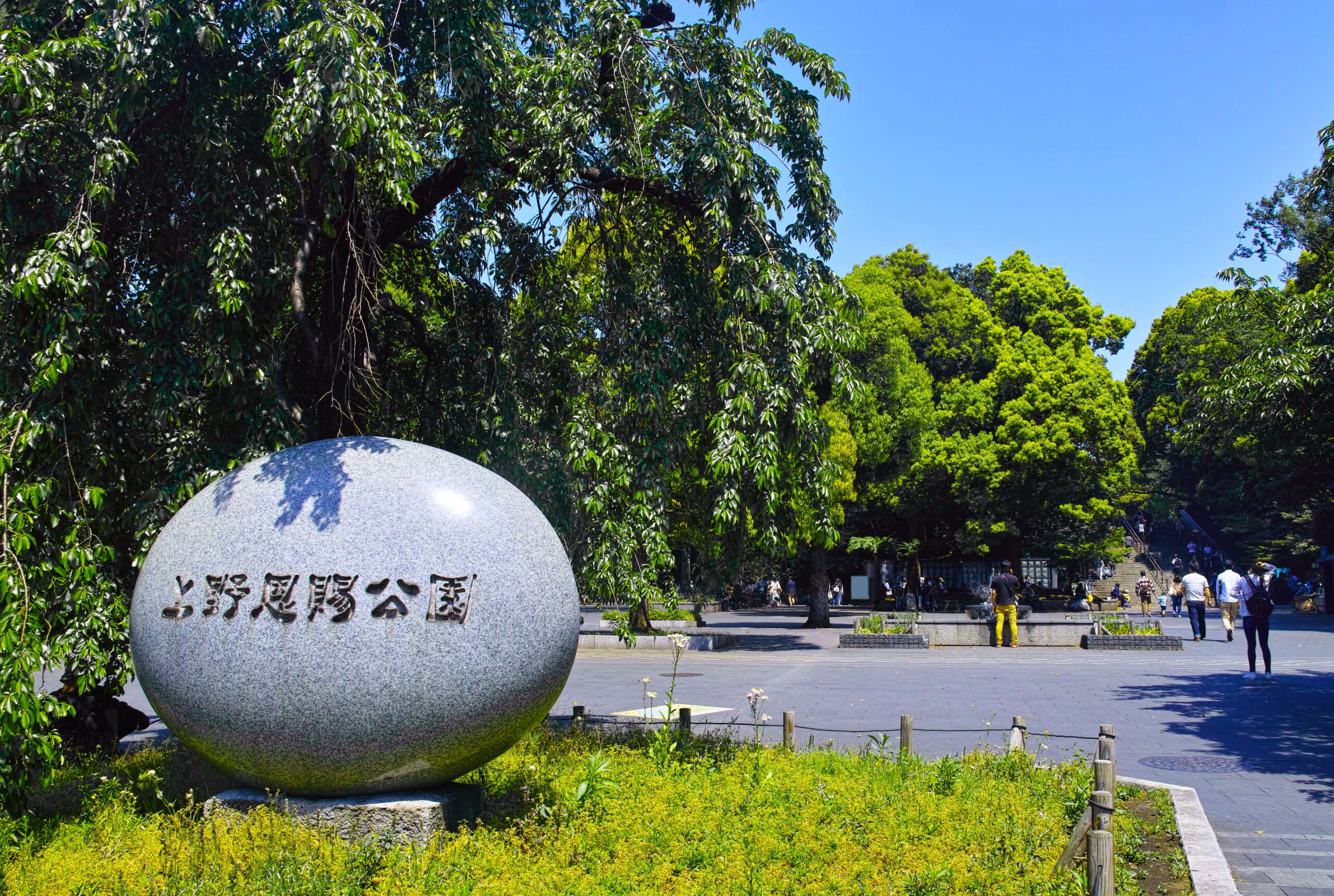
As mentioned in the previous section, in Hirosaki, Aomori (弘前, Hirosaki), the Hirosaki Cherry Blossom Festival (弘前さくらまつり, Hirosaki Sakura Matsuri) is held in the castle park surrounding Hirosaki Castle (弘前城, Hirosaki-jō). The festival runs for several days in April. Lights are installed around the castle grounds in the evening to allow visitors to see the blossoms in a well-lit environment. The festival is managed by local cultural organizations and provides scheduled cultural exhibitions and performances.
According to the official information, the 2025 Hirosaki Cherry Blossom Festival is scheduled to take place from April 18 (Friday) to May 5 (Monday), lasting for 18 days. However, it’s important to note that the dates may be subject to change depending on the cherry blossom blooming conditions. The festival features approximately 2,600 cherry trees of 52 different varieties, centered around the Somei Yoshino cherry trees. Evening illuminations are planned from sunset to 22:00, allowing visitors to enjoy the night cherry blossom viewing experience.
In Takada, Niigata (高田, Takada), the Takada Castle Cherry Blossom Road (高田城桜道, Takada-jō Sakura-michi) presents a pathway lined with numerous cherry trees. This route is maintained by local authorities, and visitors are advised to walk along designated paths to safely view the blossoms. The beauty of the cherry blossoms at Takada Castle, lit up at night with approximately 3,000 lanterns, is considered one of Japan’s three great night cherry blossom viewing spots. TheTakada Castle Site Park Cherry Blossom Festival takes place from March 28 to April 13, 2025.
For more information, including details on the festival and park, visit the Joetsu City official website or the Joetsu Kanko Navi.
Beyond the Blossoms: Discovering Unique Spring Festivals
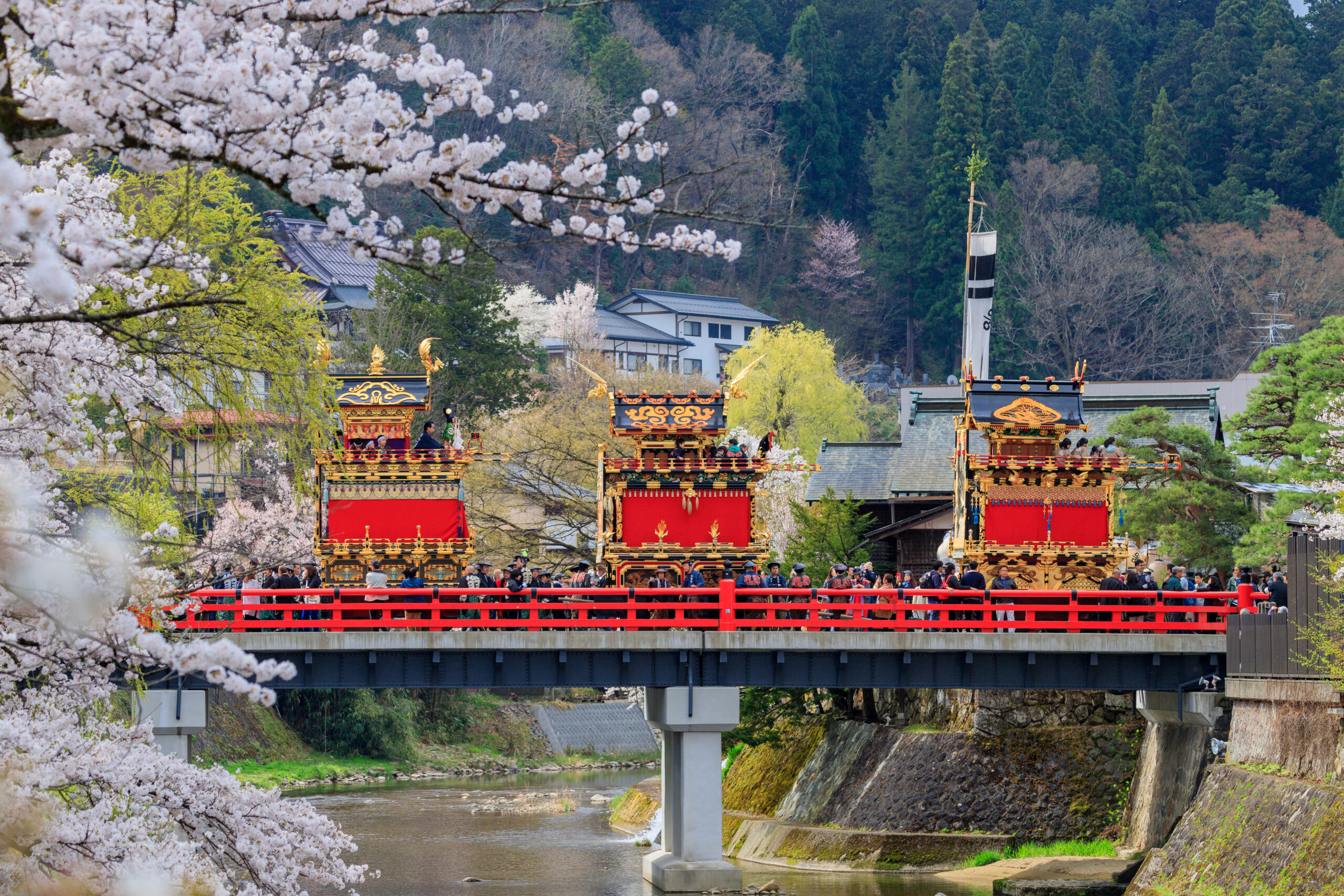
Sanja Matsuri (三社祭, Sanja-sai) in Tokyo (東京, Tōkyō) is one of Japan’s most famous festivals, held annually in Asakusa (浅草). Lasting for three days in May, it features vibrant processions of portable shrines (神輿, mikoshi) carried through the streets by enthusiastic participants. Organized by the Asakusa Shrine, the festival attracts nearly 2 million visitors each year.
For more information, visit the official Asakusa Shrine website.
In Takayama, Gifu (高山, Takayama), the Takayama Spring Festival (高山祭, Takayama Matsuri) is celebrated with historic floats paraded through the old town. This festival is held annually on April 14 and 15 and is recognized as one of Japan’s most beautiful festivals. The event is managed by the Takayama Yatai Preservation Society and showcases traditional craftsmanship and culture.
For more information, visit the official Takayama Festival website.
In Kamakura, Kanagawa (鎌倉, Kamakura), the Kamakura Festival (鎌倉まつり, Kamakura Matsuri) offers a unique cultural experience. Held in mid-April, this week-long festival celebrates the town’s rich samurai history. The highlight is the thrilling 流鏑馬 (yabusame, horseback archery) competition, along with traditional performances such as the “静の舞 (Shizuka no Mai)” dance. This exciting festival takes place primarily at 鶴岡八幡宮 (Tsurugaoka Hachimangu) Shrine, a 10-minute walk from Kamakura Station.
To learn more about the Kamakura Festival, including event schedules and traditional performances, visit the official Japan National Tourism Organization website.
These festivals showcase Japan’s rich cultural diversity beyond cherry blossoms and provide visitors with unique opportunities to experience traditional celebrations during spring.
Honoring Spring: Celebrating Seasonal Festivals and Traditions
Local events during spring provide insight into community traditions across Japan. Many rural areas organize flower festivals (花祭り, Hana Matsuri) that focus on regional blooms other than cherry blossoms. Such festivals are managed by local municipal offices or community groups. Visitors can expect organized guided tours that explain the botanical significance of various flowers. There are scheduled workshops where local artisans demonstrate traditional crafts, and local food stands serve seasonal dishes.
Examples of Spring Flower Festivals
- Fuji Shibazakura Festival (富士芝桜まつり) – Held at 富士本栖湖リゾート (Fuji Motosuko Resort) in Yamanashi, this festival features breathtaking fields of pink moss phlox with Mount Fuji as a backdrop (mid-April to late May).
- Ashikaga Flower Park Wisteria Festival (あしかがフラワーパーク 大藤まつり) – Located in Tochigi, this festival highlights stunning wisteria blooms, including a 160-year-old tree (mid-April to mid-May).
- Hitachi Seaside Park Nemophila Festival (ひたち海浜公園 ネモフィラ祭り) – In Ibaraki Prefecture, this festival showcases pastel blue nemophila flowers covering vast hillsides (late April to early May).
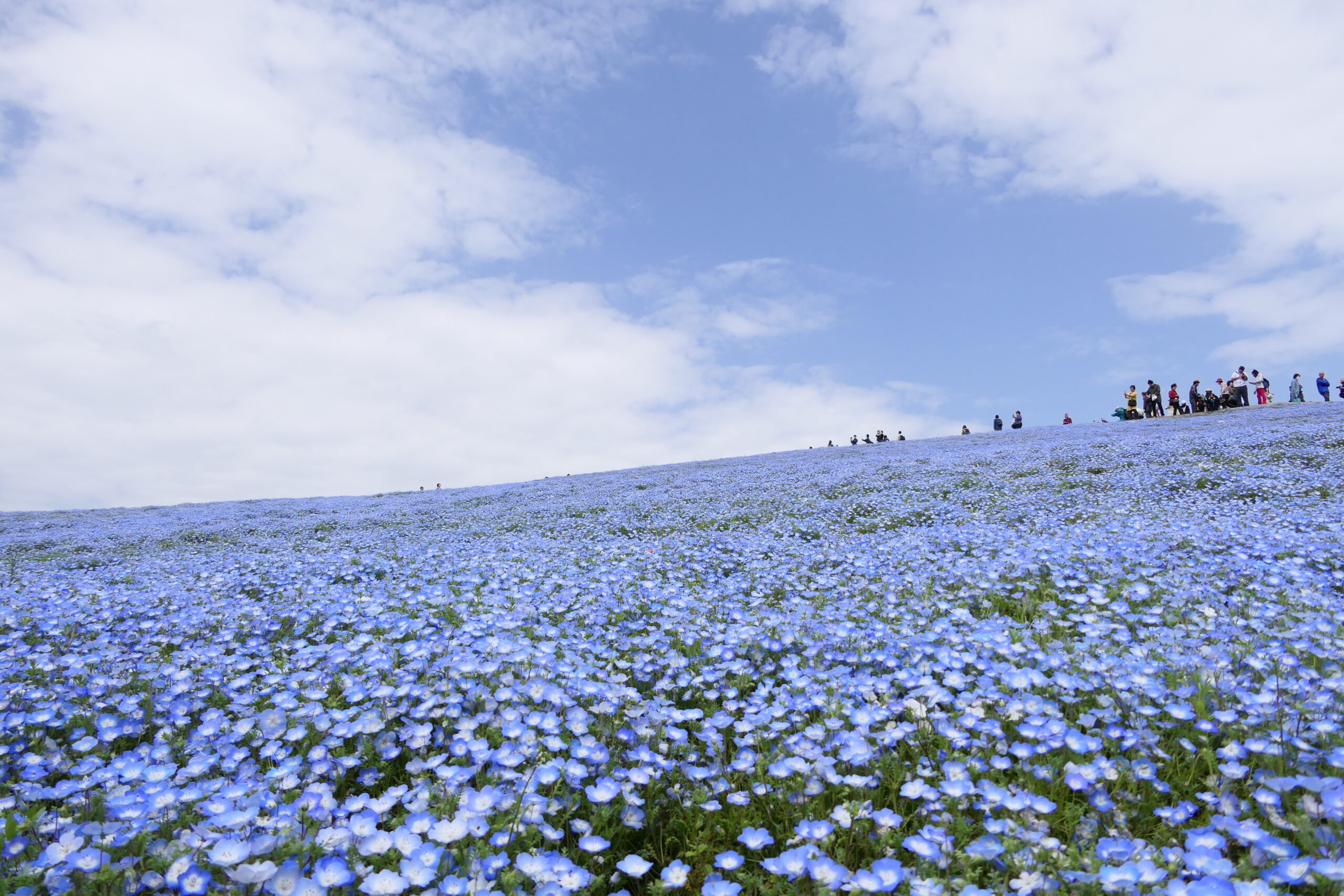
Hinamatsuri (雛祭り, Hinamatsuri), also known as Girl’s Day or the Peach Festival (桃の節句, Momo no Sekku), is celebrated on March 3rd. This festival is a traditional event to celebrate the health and happiness of young girls. Families display elaborate sets of 雛人形 (Hina Ningyo), ornamental dolls representing the Imperial Court, and offer traditional foods like 菱餅 (Hishimochi, diamond-shaped rice cakes) and 白酒 (Shirozake, white sake). The practice of displaying dolls is rooted in the Heian period, when paper dolls were used to ward off bad luck. It’s believed that the tradition of displaying dolls originated from the ancient custom of 流し雛 (Nagashibina), setting paper dolls afloat on rivers to carry away bad luck and misfortune.
Information about Hinamatsuri traditions and events is available through tourist information centers and websites, providing details to visitors interested in experiencing this traditional Japanese custom.
Famous Children’s Day Festivals
- Yanagawa Hina Matsuri “Sagemon Meguri” (柳川雛祭り さげもんめぐり) – Held in Yanagawa, Fukuoka, this festival features colorful さげもん (sagemon, hanging decorations) displayed alongside traditional hina dolls. Visitors can enjoy viewing the decorations and participate in boat rides through the canals.
- Katsuura Big Hina Matsuri (勝浦ビッグひな祭り): This festival is held annually from late February to March 3rd in Katsuura, Chiba Prefecture. The town is decorated with thousands of hina dolls displayed at various locations, including Tomisaki Shrine (遠見岬神社), local temples, and shops. The main attraction is the approximately 1,800 dolls displayed on the 60 stone steps of Tomisaki Shrine.
These festivals provide unique opportunities to experience the traditions of Hinamatsuri while exploring local culture and craftsmanship.
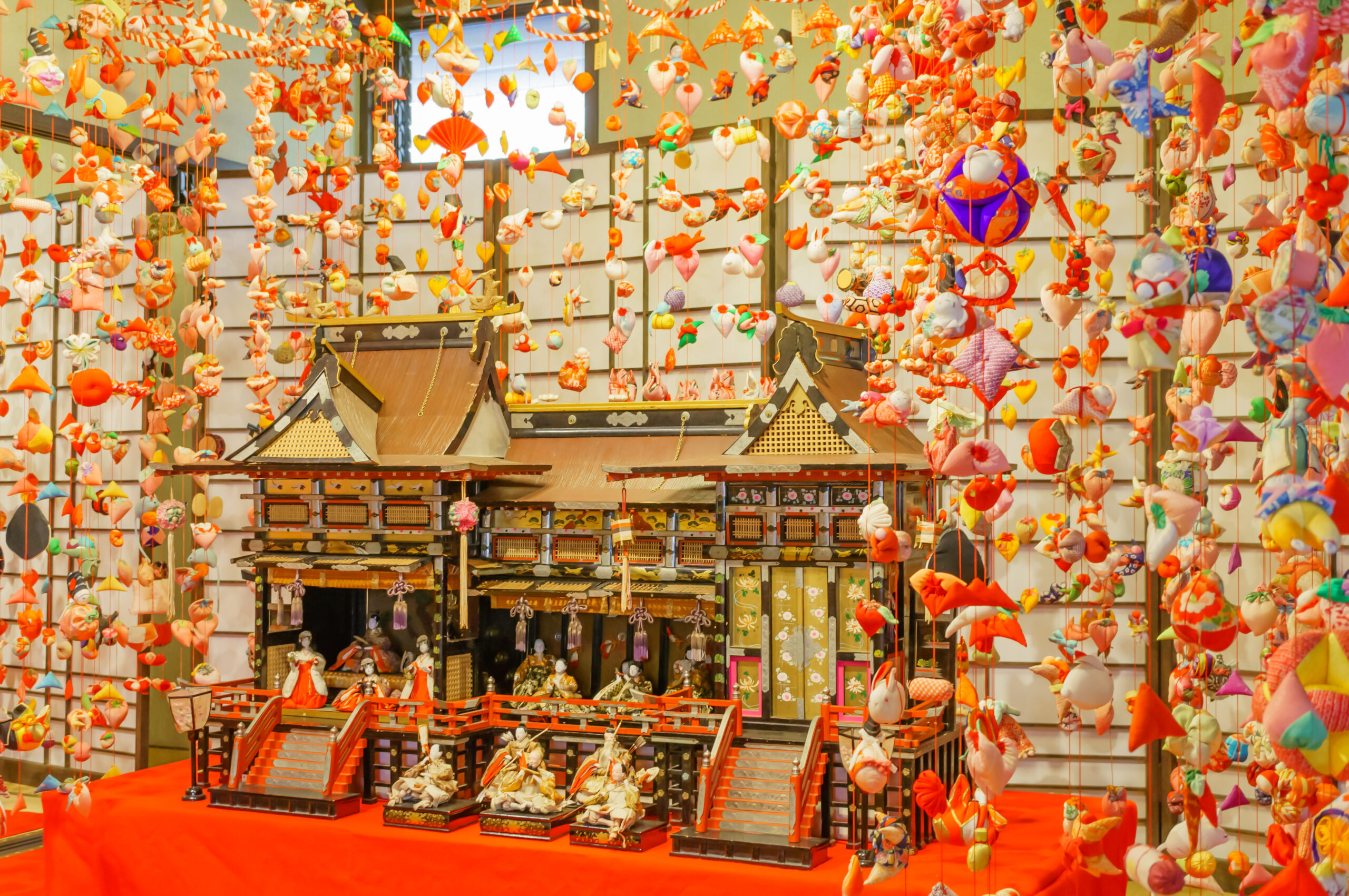
Children’s Day (こどもの日, Kodomo no Hi) is celebrated on May 5th nationwide to honor children’s health and happiness. Public spaces and homes are decorated with 鯉のぼり (Koinobori, carp-shaped flags), symbolizing strength and success. The day also features traditional foods like 柏餅 (Kashiwa-mochi, oak leaf-wrapped rice cakes) and 菖蒲湯 (Shobu-yu, iris baths). Originally celebrated as 端午の節句 (Tango no Sekku) during the Edo period, it was later renamed in 1948 to include all children.
For more information about Children’s Day traditions in Japan, including the display of samurai dolls (武者人形, Musha Ningyo), miniature armor (鎧, Yoroi), helmets (兜, Kabuto), and carp streamers (鯉のぼり, Koinobori), as well as traditional foods like kashiwamochi (柏餅) and chimaki (ちまき), visit the official Yoshitoku website. This site provides detailed explanations of the holiday’s origins, customs, and significance in Japanese culture.
Famous Children’s Day Festivals
- Tokyo Tower Koinobori Festival (東京タワーこいのぼりフェスティバル, Tōkyō Tawā Koinobori Fesutibaru) – Held annually from March 20 to May 6, Tokyo Tower displays 333 vibrant koinobori matching its 333-meter height. The highlight is a rare 6-meter-long Pacific saury streamer, symbolizing solidarity with Ofunato City’s recovery efforts. Visitors enjoy a striking contrast of red towers, blue skies, and colorful carp.
- Kazo Koinobori Festival (加須こいのぼり祭り, Kazo Koinobori Matsuri) – In Saitama Prefecture, this festival hoists the world’s largest koinobori (100 meters long) alongside 3,500 smaller flags along the Tone River. Held May 3–5, it features drum performances, traditional dances, and ceremonial speeches by local officials.
Both festivals emphasize Japanese cultural values of resilience and community while offering visually stunning celebrations. Confirm all event details with official sources before making plans.
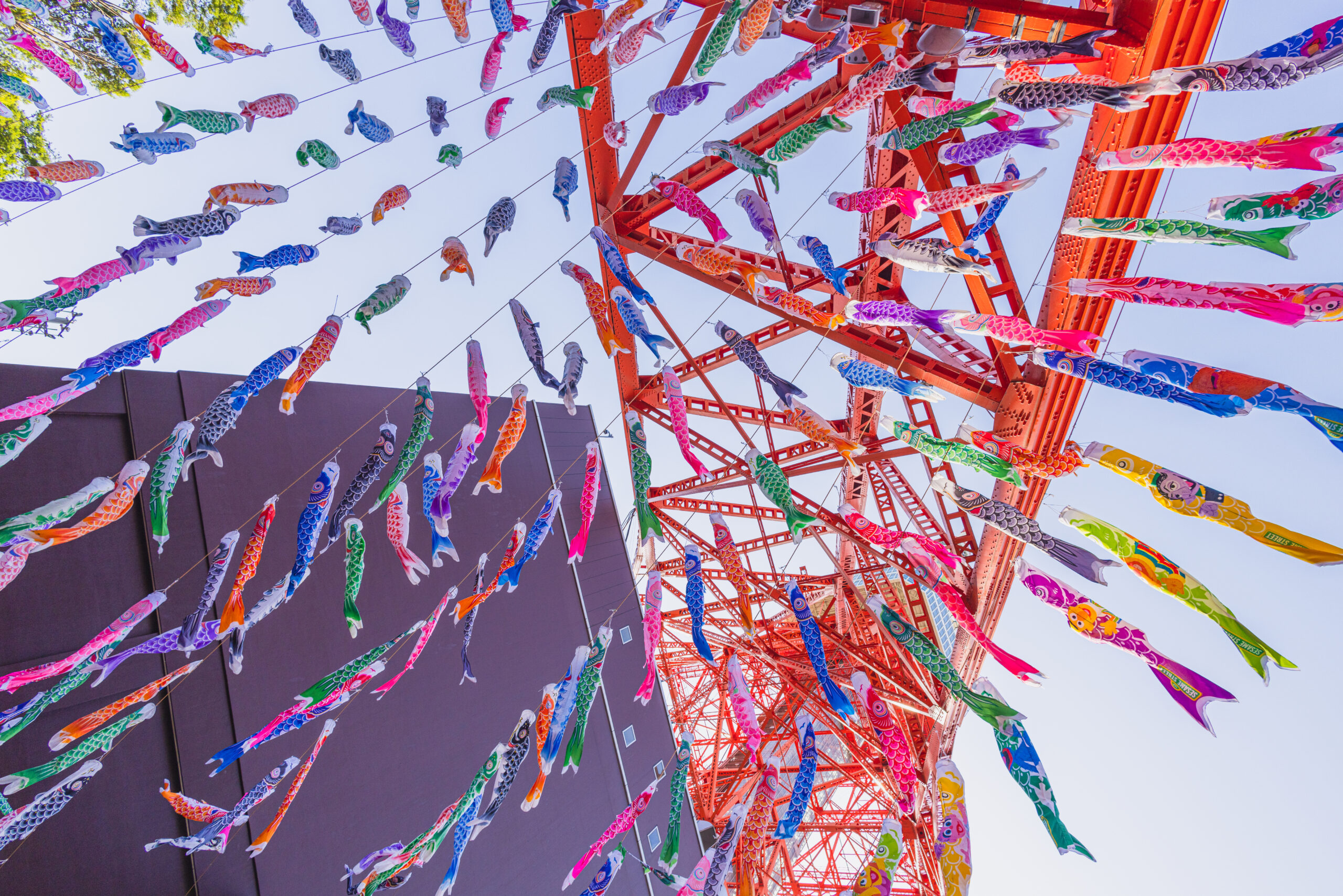
These festivals highlight Japan’s vibrant cultural traditions and offer visitors unique opportunities to experience the beauty of spring beyond cherry blossoms.
Off-the-Beaten-Path Adventures: Discovering Hidden Gems
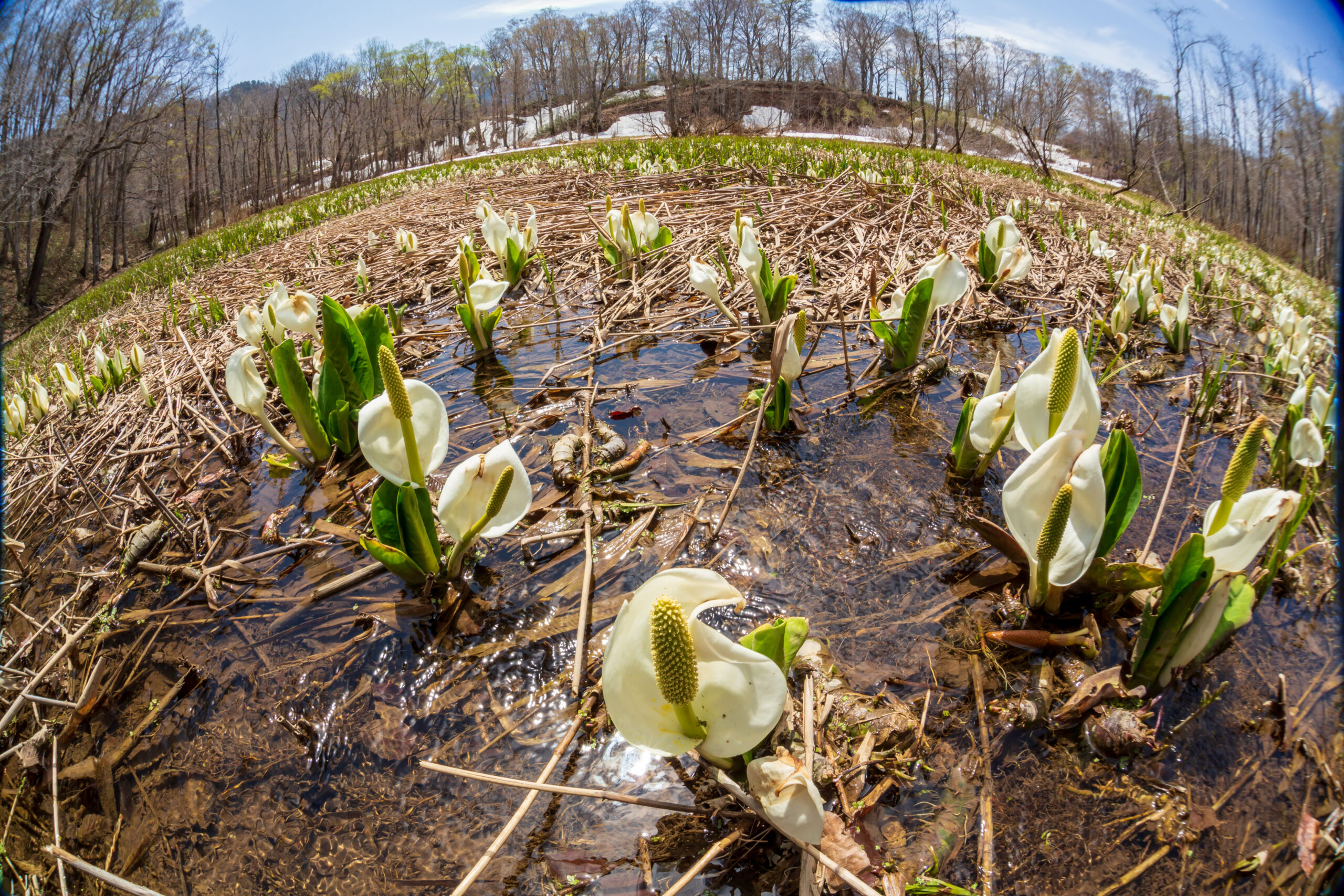
Exploring “Little Kyoto” and Quaint Villages
Instead of larger rural areas, consider exploring smaller towns and villages, often referred to as “Little Kyoto” (小京都, Shōkyōto), that offer a concentrated dose of traditional charm. These destinations often mimic the atmosphere of Kyoto in a more compact and intimate setting.
- 角館 (Kakunodate) – Located in Akita Prefecture, Kakunodate is a former castle town known as “Little Kyoto of Michinoku” (みちのくの小京都, Michinoku no Shōkyōto). The town features well-preserved samurai residences and streets lined with weeping cherry trees. The area is beautiful in both spring (cherry blossoms) and autumn (foliage).
- 妻籠 (Tsumago) – Situated in Nagano Prefecture, Tsumago is a beautifully preserved post town along the ancient Nakasendo Trail. It offers a glimpse into Edo-period Japan with its traditional wooden buildings, stone-paved streets, and lack of modern amenities like telephone poles.These destinations provide an immersive experience into Japan’s past, allowing visitors to wander through historic streets and soak in the atmosphere of a bygone era. Please check official tourism websites for the latest information before planning your visit.
Hidden Natural Wonders
Secret Waterfalls and Hiking Trails
奥裾花自然園 (Ookusobana shizenen) – 奥裾花自然園 in Nagano Prefecture offers a serene escape with its vast fields of ミズバショウ (mizubasho, water lilies) and pristine beech forests. The park features well-maintained hiking trails that lead to hidden waterfalls and tranquil wetlands, allowing visitors to immerse themselves in untouched nature.
Undiscovered Flower Fields
白神山地 青池 (Shirakami Sanchi Aoike) – 白神山地 青池 in Aomori Prefecture is a hidden gem known for its mysteriously blue pond surrounded by lush forests. The area offers scenic hiking trails and breathtaking views of seasonal wildflowers. The pond’s vivid blue color, which changes with the seasons and time of day, remains unexplained, adding to its allure.
Unique Cultural Experiences
Engage in local traditions by joining small-scale festivals and visiting traditional craft workshops. These hands-on experiences offer clear insights into regional customs and provide a deeper understanding of Japan’s cultural diversity.
Visiting Traditional Craft Workshops
金箔体験 (Kinpaku Taiken) – In Kanazawa City(金沢市, Kanazawa-shi), visitors can experience various traditional crafts. The Gold Leaf Experience (金箔体験, Kinpaku Taiken) allows participants to create unique souvenirs using Kanazawa’s famous gold leaf technique. These workshops are available throughout spring and offer a hands-on approach to understanding local artisanal skills.
These experiences provide an excellent opportunity to immerse yourself in Japanese culture and create lasting memories of your spring trip to Japan.
Conclusion: Making the Most of Your Spring in Japan
Immerse yourself fully in Japan’s spring by wandering beneath blooming cherry blossoms and connecting with its vibrant culture. Enhance your journey by venturing beyond popular spots and savoring seasonal delicacies like kashiwa mochi (oak leaf-wrapped rice cakes) or hishimochi (diamond-shaped rice cakes), traditionally enjoyed during Children’s Day and Hinamatsuri.
Remember to pack layers for unpredictable weather and check allergy forecasts. Contribute to a community of authentic travel experiences by sharing insights and inspiring others. Explore lesser-known gems and the distinct character of each region. To avoid peak crowds, especially during Golden Week, consider early visits or traveling to off-the-beaten-path destinations.
As the sakura fall, remember that Japan’s beauty continues to unfold throughout the year, with each season offering its own unique tapestry of landscapes, festivals, and traditions. Embrace the opportunity to return and discover new facets of this captivating country, ensuring your travel story is one of continuous exploration and appreciation.
Q&A: Essential Tips for Enjoying Spring in Japan
When is the best time to see cherry blossoms?
The best time is typically from late March to early April, but the exact bloom timing depends on the region and weather conditions. For example, blossoms in southern areas like Kyushu bloom earlier, while northern regions like Hokkaido bloom later. Check local forecasts for precise dates.
What should I pack for spring in Japan?
Bring layered clothing to adjust to fluctuating temperatures, a lightweight waterproof jacket for unexpected rain, and comfortable walking shoes for exploring. Spring mornings and evenings can be chilly, so a light sweater or scarf is also recommended.
How can I avoid crowds during Golden Week?
Golden Week (late April to early May) is one of Japan’s busiest travel periods. To avoid crowds, visit popular attractions early in the morning or opt for less-visited destinations like smaller towns or rural areas. Booking accommodations well in advance is also essential during this time.
Are tattoos allowed in onsen?
Policies vary by facility—some onsen prohibit visible tattoos due to cultural norms, while others allow them or offer private baths. Check the onsen’s website or contact them directly before visiting to avoid inconvenience.
What are some good day trips from Tokyo?
Hakone (箱根, Hakone) is perfect for relaxing in hot springs with stunning views of Mount Fuji, while Kamakura (鎌倉, Kamakura) offers historic temples, a giant Buddha statue, and scenic coastal walks. Both destinations are easily accessible by train and provide a refreshing escape from the city.
